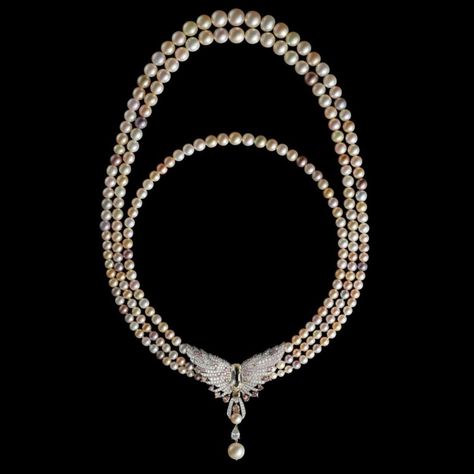Collecting Rare Books and Manuscripts: A Niche in Luxury Collectibles

Rare books and manuscripts hold a unique allure in the realm of luxury collectibles, captivating enthusiasts with their historical significance, cultural value, and aesthetic appeal. These treasures, often passed down through generations, represent more than mere artifacts; they are windows into the past, offering insights into the minds and lives of those who came before us.
In the world of luxury collectibles, where the pursuit of rarity and exclusivity reigns supreme, rare books and manuscripts stand out as prized possessions coveted by discerning collectors. Each volume tells a story, whether through its age-worn pages, intricate illustrations, or handwritten annotations, transporting collectors to different eras and cultures.
The allure of rare books and manuscripts lies not only in their historical significance but also in their ability to evoke a sense of wonder and fascination. From illuminated medieval manuscripts to first editions of classic literary works, each piece represents a tangible link to the past, offering collectors a glimpse into worlds long gone.
Moreover, rare books and manuscripts occupy a unique position in the luxury market, appealing to collectors who value both the intrinsic worth and the aesthetic beauty of these items. Unlike other luxury collectibles, such as fine art or jewelry, rare books and manuscripts offer a tangible connection to history, making them highly sought after by those with a passion for learning and discovery.
In the following discussion, we will delve into the various aspects of collecting rare books and manuscripts, exploring their historical context, cultural significance, market dynamics, acquisition strategies, and preservation techniques. Through this exploration, we hope to shed light on the enduring appeal of rare books and manuscripts in the realm of luxury collectibles.
Definition and Significance of Rare Books and Manuscripts
Rare books and manuscripts are esteemed treasures within the realm of luxury collectibles, esteemed for their historical significance, cultural importance, and artistic value. These items, often considered artifacts of the past, hold a unique allure for collectors seeking both intellectual enrichment and aesthetic appreciation.
The definition of rare books and manuscripts encompasses a broad spectrum of materials, ranging from ancient scrolls and illuminated manuscripts to first editions of classic literary works and historically significant documents. Each of these items bears witness to a specific moment in time, providing invaluable insights into the customs, beliefs, and aspirations of bygone eras.
The significance of rare books and manuscripts lies in their ability to serve as tangible links to the past, offering a window into the minds and lives of those who came before us. They embody the collective wisdom of humanity, preserving the thoughts, ideas, and achievements of generations past for future generations to cherish and study.
In the world of luxury collectibles, rare books and manuscripts occupy a unique position, valued not only for their historical importance but also for their aesthetic beauty and craftsmanship. Whether adorned with intricate illustrations, ornate bindings, or handwritten annotations, these items possess a timeless elegance that appeals to collectors with a discerning eye for quality and refinement.
Moreover, rare books and manuscripts represent more than mere objects of material wealth; they are symbols of intellectual curiosity, cultural heritage, and artistic expression. As such, they hold a special place in the hearts of collectors who appreciate the finer things in life and seek to enrich their lives with the beauty and wisdom of the past.
Historical Evolution of Rare Book Collecting

The historical evolution of rare book collecting traces back to ancient civilizations, where scribes meticulously hand-copied texts onto scrolls, laying the foundation for the written word as a cherished commodity. As societies advanced, the production of books transitioned from scrolls to codices, leading to the creation of early manuscripts adorned with elaborate illustrations and bindings.
During the Middle Ages and Renaissance periods, the Catholic Church and aristocratic elites were among the primary collectors of rare books and manuscripts, often commissioning skilled scribes and illuminators to produce lavish volumes for their personal libraries. These manuscripts served not only as repositories of knowledge but also as symbols of wealth and prestige, with their ornate decorations and fine craftsmanship reflecting the status of their owners.
The invention of the printing press in the 15th century revolutionized the production of books, making them more accessible to a wider audience and spurring the growth of book collecting among scholars, bibliophiles, and collectors. As literacy rates increased and the demand for books soared, rare editions and manuscripts became highly prized possessions, sought after for their historical value and aesthetic appeal.
Throughout the centuries, rare book collecting has continued to evolve, with collectors and institutions alike vying for prized volumes and manuscripts. The advent of the internet and online auctions has further transformed the landscape of rare book collecting, making it easier for enthusiasts to connect, acquire, and trade rare items from around the world.
Today, rare book collecting remains a niche but thriving pursuit, attracting collectors who appreciate the historical significance, cultural value, and aesthetic beauty of rare books and manuscripts. From medieval manuscripts to first editions of literary classics, these treasures continue to captivate the imaginations of collectors and scholars alike, preserving the written word as a timeless symbol of human creativity and ingenuity.
Cultural and Historical Value
The cultural and historical value of rare books and manuscripts transcends their physical form, encompassing the rich tapestry of human civilization preserved within their pages. These literary artifacts serve as windows into the past, offering invaluable insights into the customs, beliefs, and achievements of bygone eras.
Books and manuscripts play a pivotal role in shaping cultural identity, serving as repositories of knowledge, wisdom, and creativity passed down through generations. From ancient religious texts and philosophical treatises to literary masterpieces and scientific discoveries, each volume represents a unique contribution to the collective heritage of humanity.
Moreover, rare books and manuscripts offer glimpses into the lives of individuals who shaped history, from monarchs and religious leaders to scholars and artists. Annotations, marginalia, and inscriptions provide clues to the thoughts and experiences of previous owners, enriching our understanding of their worldviews and aspirations.
Beyond their historical significance, rare books and manuscripts hold cultural value as symbols of intellectual achievement and artistic expression. Illuminated manuscripts, with their intricate illustrations and ornate decorations, showcase the skill and craftsmanship of medieval scribes and illuminators. Meanwhile, first editions of literary classics bear witness to the enduring power of storytelling and the evolution of literary trends over time.
In the realm of luxury collectibles, rare books and manuscripts occupy a special place, valued not only for their historical importance but also for their aesthetic beauty and cultural resonance. Collectors and enthusiasts alike are drawn to these treasures, eager to immerse themselves in the rich tapestry of human experience preserved within their pages.
Artistic and Aesthetic Attributes
Rare books and manuscripts are not only valued for their historical and cultural significance but also for their exquisite artistic and aesthetic attributes. These literary treasures are often adorned with intricate illustrations, elaborate bindings, and ornate decorations, showcasing the skill and craftsmanship of artisans throughout the ages.
The artistic appeal of rare books and manuscripts lies in their ability to engage the senses and evoke a sense of wonder and beauty. Illuminated manuscripts, in particular, feature stunning illustrations, vibrant colors, and elaborate embellishments that captivate the eye and spark the imagination. From intricate borders and initial letters to full-page miniatures depicting scenes from religious texts or literary narratives, these artistic elements transform each page into a work of art in its own right.
Similarly, the aesthetic qualities of rare book bindings add to their allure as luxury collectibles. Fine bindings crafted from luxurious materials such as leather, silk, and velvet, are often embellished with elaborate designs, gold leaf, and precious gemstones, elevating them from mere books to objects of beauty and opulence.
Furthermore, rare books and manuscripts offer a glimpse into the evolution of artistic styles and techniques throughout history. Whether it’s the intricate calligraphy of medieval manuscripts or the refined typography of early printed books, each volume reflects the aesthetic sensibilities of its time, making it a valuable artifact for scholars, collectors, and art enthusiasts alike.
In the world of luxury collectibles, rare books and manuscripts stand out for their artistic merit, offering collectors the opportunity to acquire not only intellectual treasures but also visually stunning works of art that enrich the senses and inspire admiration for centuries to come.
Rarity and Authentication
Rarity and authentication are crucial aspects that contribute to the allure and value of rare books and manuscripts within the realm of luxury collectibles. The scarcity of certain editions, manuscripts, or historical documents often elevates their desirability among collectors, making them prized possessions sought after for their exclusivity.
Authenticity is paramount in the world of rare books and manuscripts, where meticulous scrutiny and expert analysis are required to verify the provenance and legitimacy of each item. With forgeries and reproductions abound, authentication processes involving thorough examination of physical characteristics, such as paper, ink, bindings, and watermarks, as well as historical documentation and provenance records, are essential to ensuring the integrity and value of rare books and manuscripts.
Furthermore, rarity and authentication go hand in hand, as the scarcity of genuine artifacts enhances their value and desirability among collectors. Whether it’s a first edition of a literary classic, a manuscript penned by a renowned author, or a historically significant document, the rarity of such items contributes to their allure as luxury collectibles, commanding premium prices in the market.
Collectors and enthusiasts are drawn to rare books and manuscripts not only for their intrinsic beauty and historical significance but also for the assurance of authenticity and rarity. Each acquisition represents a tangible connection to the past, a piece of history to be cherished and preserved for future generations to appreciate. In the world of luxury collectibles, rare books and manuscripts stand as testaments to human ingenuity, creativity, and intellect, embodying the timeless pursuit of knowledge and beauty.
Market Trends and Dynamics
The market for rare books and manuscripts is a dynamic and ever-evolving landscape, shaped by a myriad of factors including supply and demand, cultural trends, and economic conditions. In recent years, there has been a growing interest in rare books and manuscripts among collectors and investors, driving up prices and creating a competitive market for these coveted items.
One of the key trends in the market is the increasing demand for rare editions of literary classics, particularly first editions and limited printings signed by the author. Collectors are willing to pay top dollar for these rarities, often viewing them as investment opportunities as well as prized possessions for their personal libraries.
Another notable trend is the growing popularity of manuscripts and historical documents, with collectors drawn to the allure of owning pieces of history that offer unique insights into the past. Documents signed by historical figures or containing significant historical events fetch high prices at auctions, reflecting the market’s appetite for authenticity and provenance.
Furthermore, advancements in technology have transformed the way rare books and manuscripts are bought and sold, with online auctions and digital platforms making it easier for collectors to access and acquire rare items from around the world. This increased accessibility has led to a broader and more diverse market, with collectors from different regions and backgrounds participating in the trade.
Overall, the market for rare books and manuscripts is characterized by a combination of tradition and innovation, with collectors and dealers adapting to changing trends and embracing new opportunities. As the demand for rare and unique items continues to grow, the market is likely to remain vibrant and dynamic, offering endless possibilities for collectors and enthusiasts alike.
Strategies for Acquisition
Acquiring rare books and manuscripts requires careful planning and strategic execution, especially in the competitive world of luxury collectibles. Collectors employ various strategies to secure coveted items and build their collections, leveraging their knowledge, resources, and networks to achieve success.
One effective strategy for acquisition is to establish relationships with reputable dealers, auction houses, and private collectors who specialize in rare books and manuscripts. By cultivating these connections, collectors gain access to exclusive offerings and insider information about upcoming sales and acquisitions, giving them a competitive edge in the market.
Another key strategy is to stay informed about market trends and developments, keeping abreast of new discoveries, significant auctions, and changes in valuation. This requires continuous research and engagement with the broader community of collectors, scholars, and experts, allowing collectors to identify emerging opportunities and make informed decisions about potential acquisitions.
In addition, collectors often focus on niche areas or specific genres within the realm of rare books and manuscripts, developing expertise and specialization in particular subjects or periods. By concentrating their efforts on a defined niche, collectors can build more cohesive and valuable collections while also differentiating themselves in the market.
Furthermore, some collectors adopt a proactive approach to acquisition by actively seeking out items through targeted searches, attending auctions, and participating in dealer exhibitions and book fairs. This hands-on approach allows collectors to directly engage with potential acquisitions, assess their condition and authenticity, and negotiate favorable terms with sellers.
Overall, successful acquisition strategies in the world of rare books and manuscripts require a combination of knowledge, patience, and persistence, as well as a willingness to adapt to changing market conditions and seize opportunities as they arise. By employing these strategies, collectors can enhance their chances of acquiring coveted items and building impressive collections of luxury collectibles.
Preservation and Maintenance Techniques

Preservation and maintenance techniques are essential for ensuring the longevity and integrity of rare books and manuscripts, particularly in the realm of luxury collectibles where the value and significance of these items are paramount. Collectors employ various strategies to protect their investments and safeguard these treasures for future generations.
One crucial aspect of preservation is proper handling and storage. Rare books and manuscripts should be stored in climate-controlled environments with stable temperature and humidity levels to prevent deterioration caused by fluctuations in environmental conditions. Additionally, items should be stored upright and supported to prevent strain on bindings and pages.
Furthermore, collectors often use archival-quality materials for storage, including acid-free boxes, folders, and sleeves, to minimize the risk of deterioration due to acidic compounds present in conventional paper products. These archival materials provide a protective barrier against dust, light, and pollutants, helping to maintain the pristine condition of rare books and manuscripts.
Regular inspection and maintenance are also key components of preservation efforts. Collectors should periodically examine their collections for signs of damage or deterioration, such as foxing, mold, or insect infestations, and take appropriate measures to address any issues promptly. This may include professional conservation treatment or preventive measures such as isolation and quarantine of affected items.
In addition to physical preservation, collectors often invest in digital preservation techniques to create digital surrogates of rare books and manuscripts, allowing for easier access and dissemination while minimizing handling and exposure to light and other environmental factors. Digital preservation also facilitates scholarly research and promotes broader public engagement with these cultural treasures.
Overall, preservation and maintenance techniques play a vital role in safeguarding the longevity and value of rare books and manuscripts in the realm of luxury collectibles, ensuring that these treasures continue to inspire and delight for generations to come.







